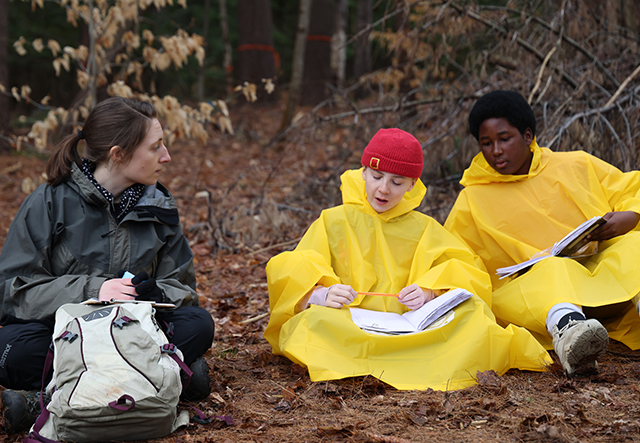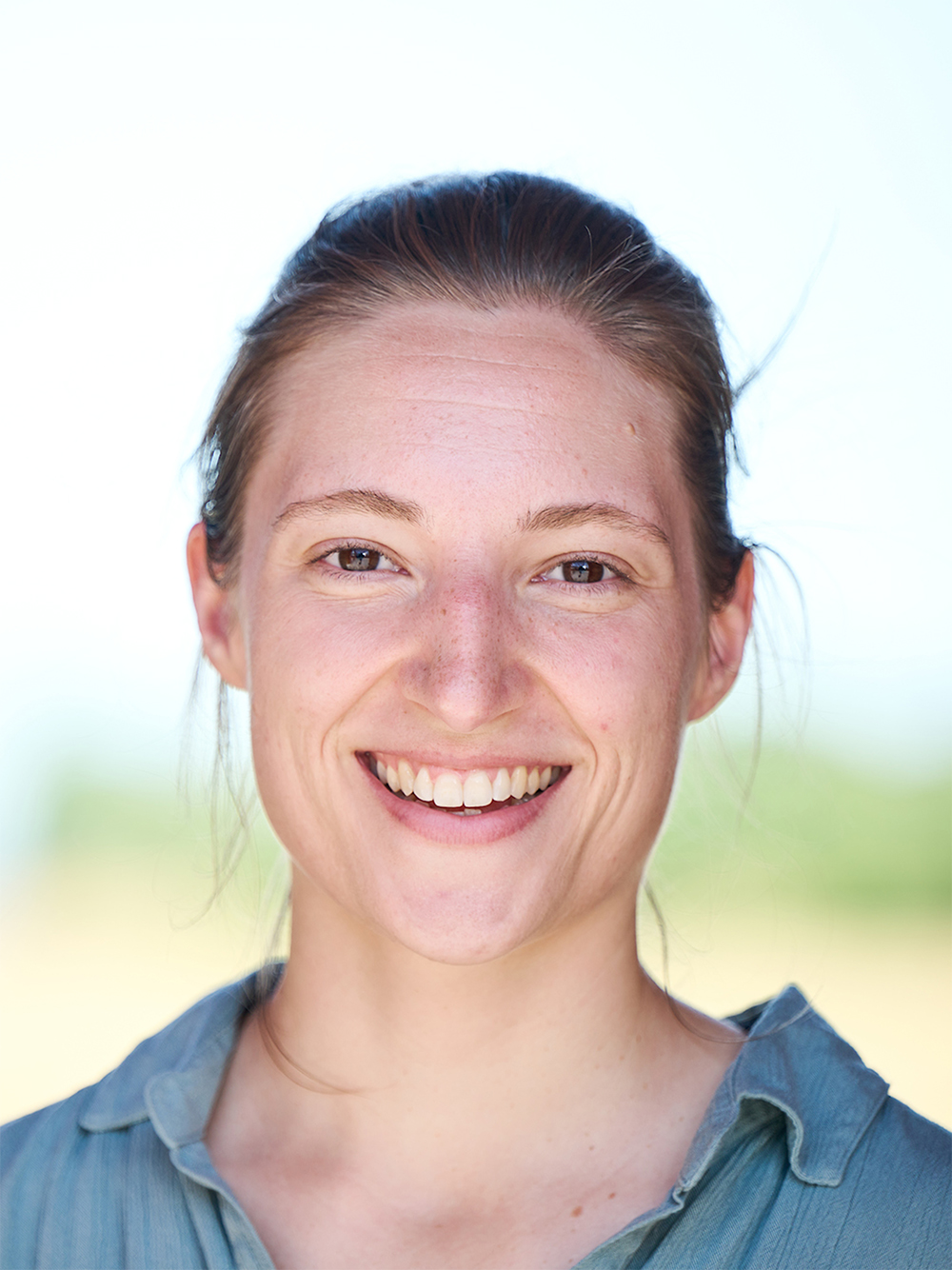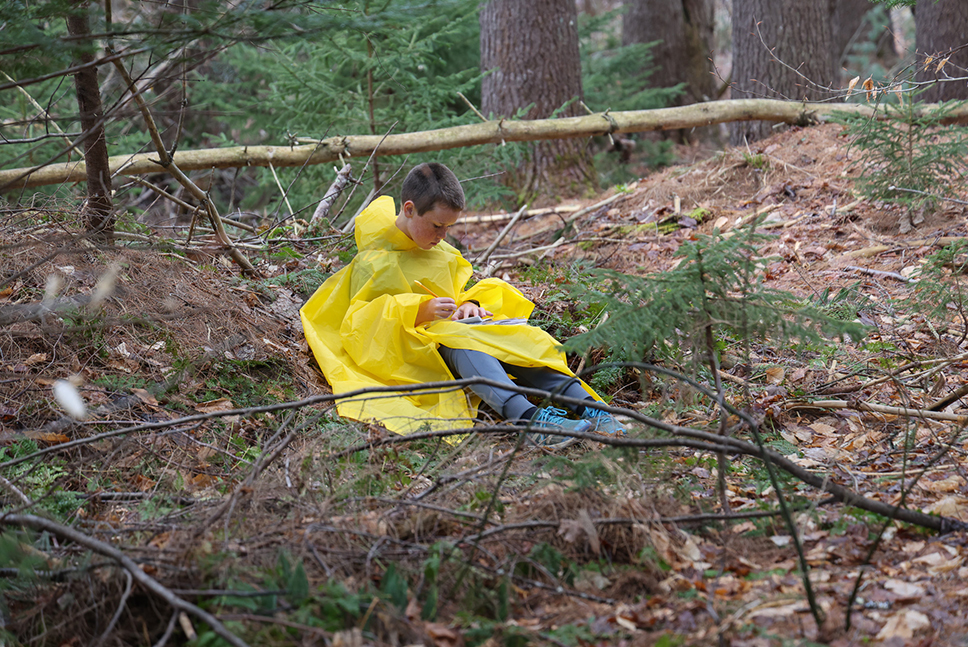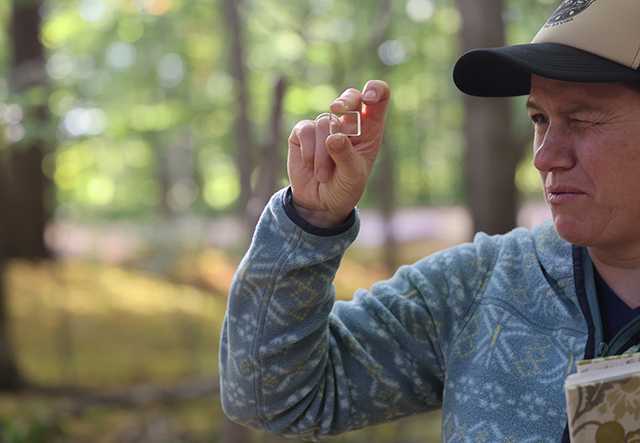Amazing to see and read.
God bless you
Stay blessed and keep shining 🌟
Meet a Changemaker: Gerlisa Garrett, Stowe Middle School

In the woods behind Vermont’s Stowe Middle School, a group of sixth graders predicts the future.
Each student holds a small notebook, filled with writing and pencil sketches. “I think in one hundred years, Stowe will be a bigger city with factories and maybe more pollution and trash,” says one student. “I drew a spaceship with all of us headed to Mars, because we’ve destroyed the planet,” says another. Gulp.
But there are more hopeful predictions, too. Says one student, “I drew Stowe with bridges and culverts to show ways we’ve done a better job with water to prevent flooding.”

These drawings are part of a weeklong immersion in nature, piloted by sixth grade language arts and science teacher Gerlisa Garrett. Every day for a week, students spent science class outside, learning about the past, present, and future of the landscape surrounding their school. They looked at historical documents and maps and searched for clues in the woods like tree diameters and animal tracks, gathering more details about who’s alive on the land today. “If we can identify how this land has been used in the past and how it’s being used today, what do we hope for in the future? What challenges will we see?” says Gerlisa. “My hope is this week will give them a stronger foundation for our next unit, talking about climate solutions and the ways humans impact our environment.”

Gerlisa started her career in environmental education, where she saw firsthand the impact that immersive experiences in nature can make. “My dream since becoming a classroom teacher has been to figure out how to bring what works about environmental education into a more traditional classroom setting, and to create meaningful connections between my students and their local community and environment,” says Gerlisa.
In a place with as much natural beauty as Stowe, Vermont, you might be wondering, is it really that hard to take a class of kids outside? The short answer is, yes. “In a traditional middle school context, getting kids outside takes a lot of resources: safety plans, additional support staff, accessibility accommodations, outdoor gear. Plus there are things to navigate like schedules and mandatory curriculum.” Overcoming these obstacles and developing this unit was the focus of Gerlisa’s time in the Education for Sustainability Leadership Academy, a year-long program offered by Shelburne Farms Institute for Sustainable Schools and the University of Vermont.

Gerlisa points to many good reasons to get kids learning outside: people of all ages, but especially children, are increasingly disconnected from natural spaces and the environment. And, there’s been a recent rise in social-emotional and mental health difficulties, across the state and around the country. A growing body of research shows exposure to nature and nature-based learning opportunities benefit social-emotional health and academic and physical wellbeing, and even increases stress resilience.
“These challenges extend beyond the scope of my classroom or even my district, but there’s one strategy within my reach, and that’s increasing students’ connection during the school day and their sense of place and belonging through nature- and place-based outdoor learning,” says Gerlisa.
Beyond the benefits to students, the hope is that the planet benefits, too. “I’m responsible for teaching them our climate curriculum, and we know climate education is most effective if students have a connection to the place they’re in, and they actually want to create change,” says Gerlisa. “All of this reinforces for me that my long-term goal of increasing students’ connections to their community is worthwhile, and maybe more urgent than ever.”

And what were the results of this weeklong experiment? “I collected data on the impact of one outdoor class experience on students’ social-emotional state. They were each asked to choose a word to describe how they felt at the beginning of class and again at the end. Overall, the response was very positive,” says Gerlisa, “from 56% of students saying they felt positive before going outside to 86% after. That’s a significant increase.”
In students’ words:
“Being outside helps me learn and makes me very calm.”
“I LOVE peace and quiet…I don’t get it at home.”
“It was fun and made it easier to learn and connect with nature. It also helped me focus better.”
“Learning outside is more fun because you get real life examples of what you are learning about.”
“Can we do more sketching and poems and hikes?”
“Gerlisa’s work on the nature unit enriched the lives of our school community and our students. It was inspiring to see students sit in nature—observe, think, draw, and write. It was both inspiring and something that there should just be more of,” says Stowe Middle School principal Misha Hudak. “We are so lucky to have Gerlisa as an educator at Stowe; she enriches the lives of our students and teachers each and every day.”
This mini-unit is just the beginning, says Gerlisa. With systems in place and gear on hand, she aims to add an additional outdoor class every month throughout the next school year. “It’s my hope that increased exposures to outdoor learning will increase the benefits for our students. And that it will catch on. Even if a handful of other educators in my school add nature-based learning days to their year, the cumulative impact across a student’s time in middle school could be substantial.” To accelerate that work, Gerlisa initiated the middle school’s participation in a district-wide partnership with the Stowe Land Trust. While the partnership is still taking shape, the hope is that teachers will have enhanced access to training, spaces, and support for nature-based learning.
Reflecting on their week in the woods, here’s what one student had to say—in the form of a poem.
An orange needle to a green grass
To a breeze whistling to you.
A bird chirping to kids laughing and having fun.
A forest has everything. Even being a giant home.
You may also like
Comments
As a retired teacher I am grateful to read about teachers finding creative ways to inspire students. Bravo to you Gerlisa for sharing your story and may others be inspired to think outside the box.

